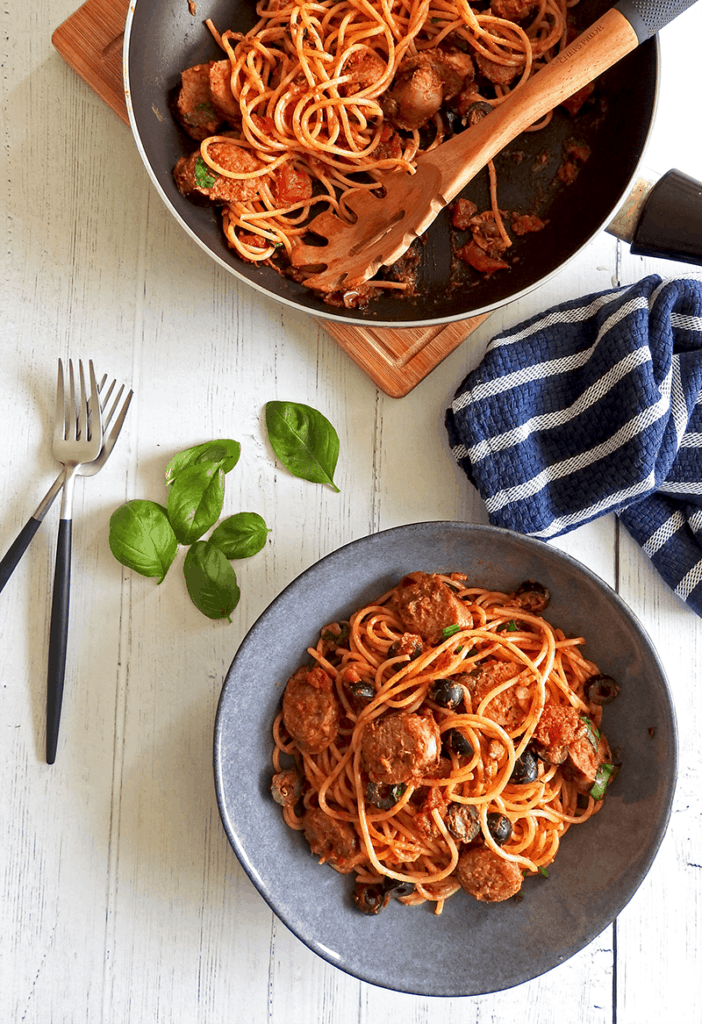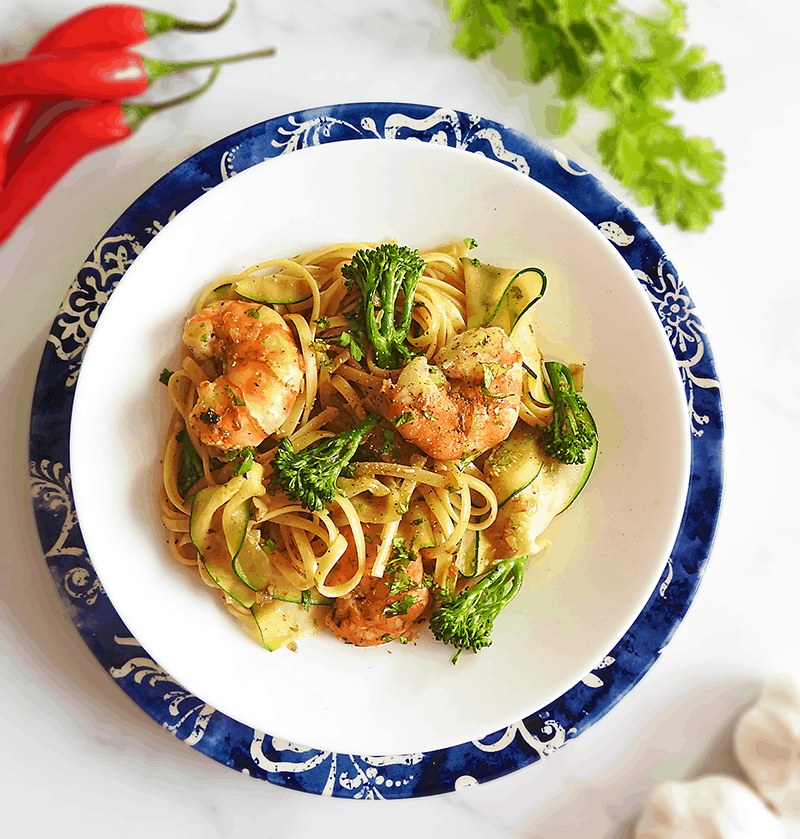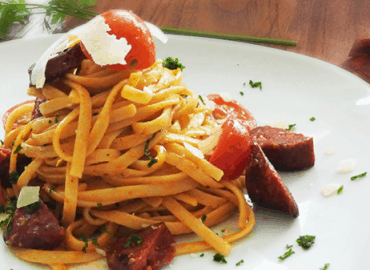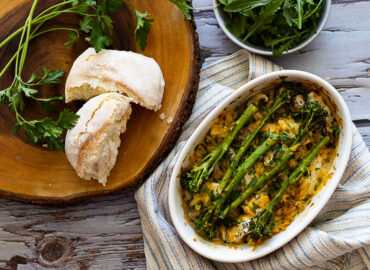*This post may contain affiliate links. Read my disclaimer here. While we may use affiliate links, we would never allow this to influence product listings or recommendations.
Linguine… spaghetti… they are pretty much the same… or are they? If you’ve been wondering what the differences are with linguine vs spaghetti, when you should use one or the other or if they are interchangeable then read on!
What are the differences with linguine vs spaghetti?
Both are types of pasta, both are long and thin, and both can be found in abundance in the supermarket. So, what is the actual difference here?
While linguine and spaghetti may look much the same, particularly from a short distance, there are actually some key differences between these two pastas.
| Linguine | Spaghetti | |
|---|---|---|
| Pronunciation | ling-wee-knee | spah-geh-tee |
| Translated Name (From Italian) | little tongues | thin strings |
| Length | 25-30cm / 10-12in | 25-30cm / 10-12in |
| Thickness | 4mm / 0.16in | around 2.5mm / 0.1in |
| Shape | round long noodle, slightly flattened | round long noodle |
| Average cooking time | 3-5 minutes fresh, 9-12 minutes dried | 2-4 minutes fresh, 8-10 minutes dried |

Can I substitute linguine for spaghetti?
While this answer may not be the most popular with any Italian readers, you can substitute spaghetti for linguine or vice versa for most purposes.
Since both pastas are very similar in shape and thickness the end result of the recipe won’t be hugely affected. However, linguine is thicker and meatier than spaghetti, so it will hold the sauce better, but will give higher ratio of pasta to sauce with each forkful.

What dishes do they go well with?
As already mentioned, you really can use spaghetti and linguine interchangeably. However, you will typically see slight differences in the recipes they are traditionally used for. Firstly, both are typically used for delicate sauces such as oil-based or creamy sauces. Similarly, both go particularly well with seafood.
Linguine, however, is a little more versatile, as it will also go well with thicker, meatier sauces. This is because the chunkier strands won’t be drowned in the sauce quite so easily.
Fun fact: while spaghetti bolognese may be a staple in the UK, you aren’t likely to find it on a classic Italian menu. This is because bolognese sauce is meaty and thick so Italians typically serve it with tagliatelle. This is flatter and better suited for the sauce to cling to.
How do you cook pasta perfectly?
Whether you choose linguine or spaghetti, making sure you have perfectly cooked pasta is essential for a great meal. Follow these few tips to make sure you have great results, every time.
Time needed: 12 minutes.
- Choose the right pan
The ideal pan for cooking long pasta is one that is fairly large in size, so a good portion of the pasta has contact with the boiling water when you add it, and you can start to wind it into the water as quickly as possible. A larger pan will also give the strands enough room to cook and reduce the chances of them sticking together.
- Prepare the water
Water as salty as the Mediterranean sea is the way to go! By doing this some of the salt will transfer to the pasta which will help to add to the taste. However, you will need to add a lot of salt to add flavour, so don’t scrimp on the seasoning. Around 10g of salt per 100g of pasta is a good rule of thumb – which is around half of a heaped tablespoon of salt per 100g.
To oil or not to oil? This divides chefs across the land with most Italians claiming that adding olive oil to the water is simply a waste of good quality oil. To stop the pasta from sticking together you simply need to use a large pan and stir a few times during the process (although a glug of oil won’t do any harm if you do prefer to add it). - Start to cook
Before you even think of putting the pasta anywhere near the pan make sure you have brought the water to a rolling boil. This will make sure it cooks according to the directed time and also helps the pasta move a little in the pan, reducing the chances of it sticking together.
Add the pasta to the water and as soon as it is soft enough to start to fold into the water do so. Use tongs to bend the pasta into the pan and make sure that it is completely submerged. Give the water a couple of swirls to separate the strands. - Stir and check
Give the pasta a stir every few minutes to prevent the strands from sticking together. Once the pasta is approaching the end of the cooking time carefully pull a strand from the water every minute or so and taste it to check if it is ready. Remove the pasta from the water as soon as it is done.
- Al dente all the way
Unless you prefer softer pasta, in most cases you want to aim for it to be cooked ‘al dente’. This means it is soft but still has a little firmness when you bite into it. This will also help the pasta keep its form in the dish and stop it from breaking apart.
- Retain some water
Before tipping the pasta into a colander or sieve take a large mug and use it to grab a cup of the water that the pasta has been cooking in. It might look a bit murky and cloudy, but this is the starch that has been released by the pasta during the cooking process. Add a few splashes of this to your recipe before strirng in the pasta and it will help to emulsify the sauce. This makes it extra silky and helps the sauce to stick to the strands of pasta.
Craving some pasta now? Check out these recipes that go great with linguine or spaghetti:










